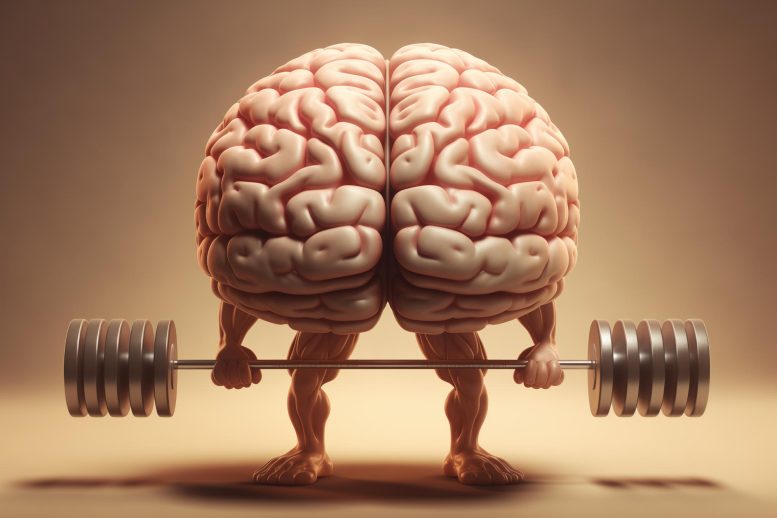
Researchers have found that high physical activity in the workplace over the course of a career is associated with a higher risk of cognitive impairment in old age. Their research advances previous studies by employing a life-course perspective, analyzing occupational activity from ages 33 to 65 and its impact on cognitive health after age 70. The study, which included over 7,000 participants, showed that those in physically demanding jobs had a 15.5% risk of cognitive issues, against 9% for those in less physically demanding roles. These findings suggest the need for interventions to mitigate the risk of dementia in physically demanding occupations.
A new study from the Norwegian National Centre of Ageing and Health, in collaboration with the Columbia Mailman School of Public Health and the Butler Columbia Aging Center, has found a connection between consistently engaging in jobs with moderate to high levels of physical activity and a heightened risk of cognitive decline.
These findings underscore the necessity for creating preventive measures for those employed in physically demanding occupations to prevent cognitive impairment. The findings were recently published in The Lancet Regional Health – Europe.
The Physical Activity Paradox
“It is critically important to understand how workplace physical activity levels relate to cognitive impairment and dementia,” observed Vegard Skirbekk, PhD, professor of Population and Family Health at Columbia Public Health. “Our work also highlights what is called the physical activity (PA) paradox – the association of leisure time physical activity with better cognitive outcomes, and how work-related physical activity can lead to worse cognitive outcomes.”
Methodology and Prior Research
Until now prior studies on occupational physical activity and dementia had been limited. Earlier studies have typically assessed occupation at a single time point in the individual’s career — often close to retirement — and have mainly been self-reported.
“Our findings extend those from previous studies by incorporating a life-course perspective into research on occupational physical activity and cognitive impairment,” said Skirbekk. “Whereas previous studies have also mainly focused on a single measurement of occupation, we include occupational trajectories from ages 33–65 to give a broader picture of the occupational histories of the participants and how these relate to the risk of cognitive impairment in later adulthood.”
Skirbekk observes that the preclinical period of dementia may start up to two decades prior to symptom onset, therefore, a life-course approach where different occupations during the working life course are taken into account could provide more accurate information on the complex relationships between occupational characteristics and cognitive impairment.
Study Findings
Using one of the world’s largest population-based studies of dementia, the HUNT4 70+ Study, researchers assessed the association of occupational physical activity at ages 33–65 with the risk of dementia and mild cognitive impairment at ages 70+.
Included in the analysis were 7005 participants, 902 whom were clinically diagnosed with dementia and 2407 diagnosed with mild cognitive impairment. Skirbekk and colleagues assessed the association of trajectories of occupational physical activity at ages 33–65 with risk of dementia and mild cognitive impairment at ages 70+. Of the 7005 participants, half were women.
Risks for dementia and mild cognitive impairment among the 70-year-old and overpopulation were 15.5 percent among those with physically demanding work in the latter part of the working life, but only 9 percent among those with jobs that had low physical demands.
“Our results particularly underscore the need to follow up on individuals with high lifetime occupational, physical activity as they appear to have a greater risk of developing dementia,” noted Skirbekk. “Future research should assess how occupational physical activity and interventions to reduce occupational physical activity or technological changes leading to altered activity, in combination with other characteristics of the job, relate to dementia and mild cognitive impairment risk in older ages. This will further our understanding of the association between occupational histories and cognitive impairment.”
Reference: “Trajectories of occupational physical activity and risk of later-life mild cognitive impairment and dementia: the HUNT4 70+ study” by Ekaterina Zotcheva, Bernt Bratsberg, Bjørn Heine Strand, Astanand Jugessur, Bo Lars Engdahl, Catherine Bowen, Geir Selbæk, Hans-Peter Kohler, Jennifer R. Harris, Jordan Weiss, Sarah E. Tom, Steinar Krokstad, Teferi Mekonnen, Trine Holt Edwin, Yaakov Stern, Asta Kristine Håberg and Vegard Skirbekk, 29 August 2023, The Lancet Regional Health – Europe.
DOI: 10.1016/j.lanepe.2023.100721
Co-author is Ekaterina Zotcheva, Norwegian National Centre of Ageing and Health.
This work was supported by the National Institutes of Health and the Research Council of Norway.









Are you sure it’s physical labor or not just the fact that the brain never gets developed? Yes at the end of the day it may amount to the same thing, but science should seek the root causes, not ancillary correlations.
They neglect to point out that those with physically demanding jobs are far more likely to engage in alcoholism and drug abuse.
This is about occupation type. A lot of physical jobs involve exposure to hazardous chemicals and environments. A computer programmer who lifts weights in the afternoon is not experiencing hazards on a daily basis. This article makes a vague correlation that surely was addressed in the scientific article, but no mention was made here. This undermines what was actually studied. I feel like I wasted my time.
This is a perfect example of correlation vs causation. What was their diet like, drinking, income and access to health care, blood pressure, BMI etc…
Read the study – they adjusted for most of those, and the correlation mostly disappeared, but not completely.
As someone who worked hard labor almost all my life, it’s a mind game game, otherwise known as, “putting ones mind to the task”, after awhile it becomes easier, otherwise known as learned behavior or turning off the cognitive, as to the suggestion of alcohol and/or drugs that’s the sort of racist type of thinking that labor is typically subjected to especially in places like Florida where the governor wants to turn the whole state into a gated community.
The study doesn’t consider the intelligence of the people involved in the study. Intelligence and dementia are linked, and typically more intelligent people get less physically laborious jobs. Being white collar versus blue collar affects the physicality of labor, and generally reflects education and intelligence. So this study has ignored an important variable. I also agree with another comment that substance use may be different between groups, and this may have cognitive impacts.
You’re correct they didn’t adjust for IQ – but they did adjust education & income (and age, sex, marital status, CVD, psychiatric or somatic impairment, hypertension, obesity, and insufficient leisure-time physical activity). The was lessened, but persisted.
I get the study, but I am wondering if this not more of a case of statistical correlation. I’m not reading any hard proof that physically demanding jobs lead to later life dementia. It just could be that people who are predisposed to dementia tend to work in labor-intensive work. As an IT worker with over 40 years experience in the industry I am still shocked at young people with little to no computer skills. Are these the candidates for future dementia patients?
What type of physically demanding job? I wish they could compare construction workers on the one hand to dancers, actors and circus performers on the other hand. I think there might be a big difference.
Since they say there is a more pronunced difference with hard physical labor later in life. it is probably due to increased microstroke susceptibility, occurence and resultant dementia symptoms related to this condition. Capillaries in the aged brain are more susceptible to aneurysm which has been shown to cause dementia. Continued labor would exacerbate the condition.